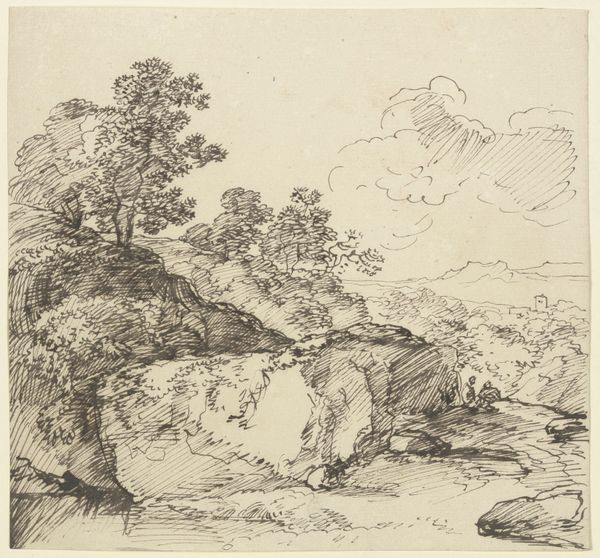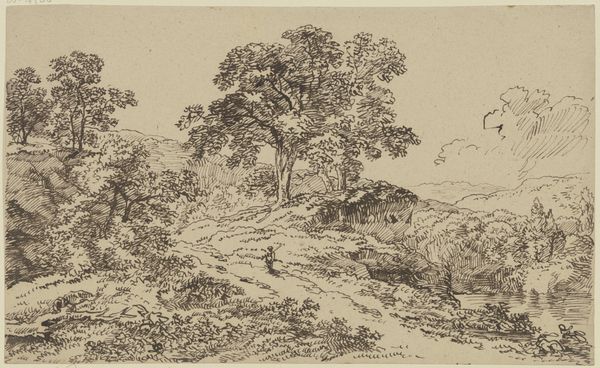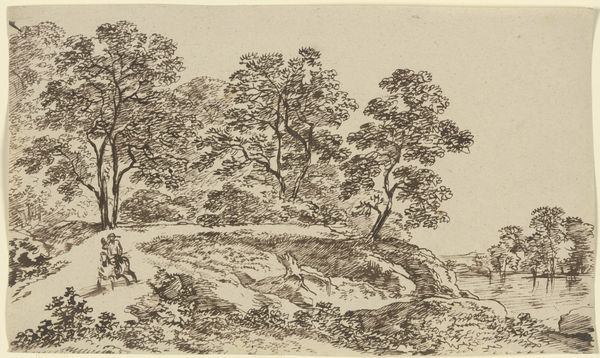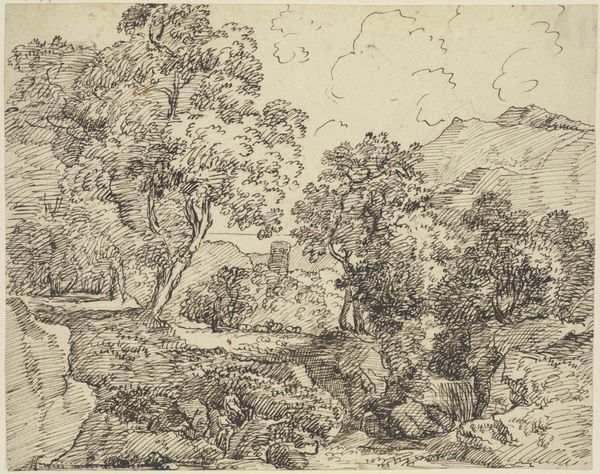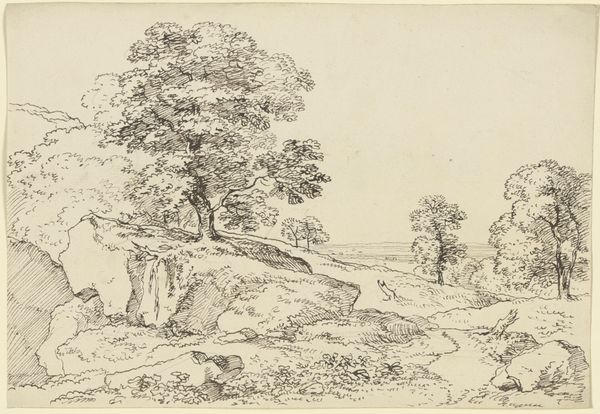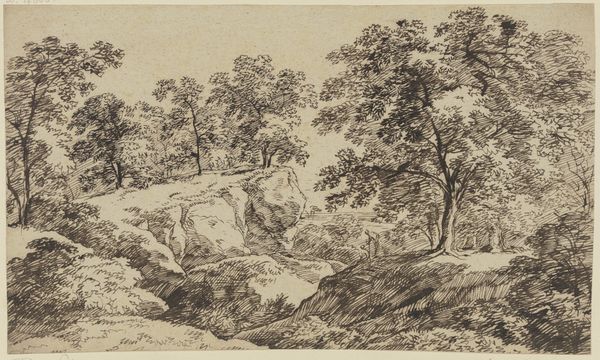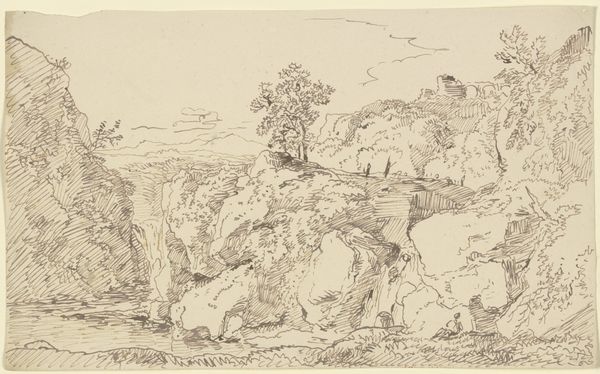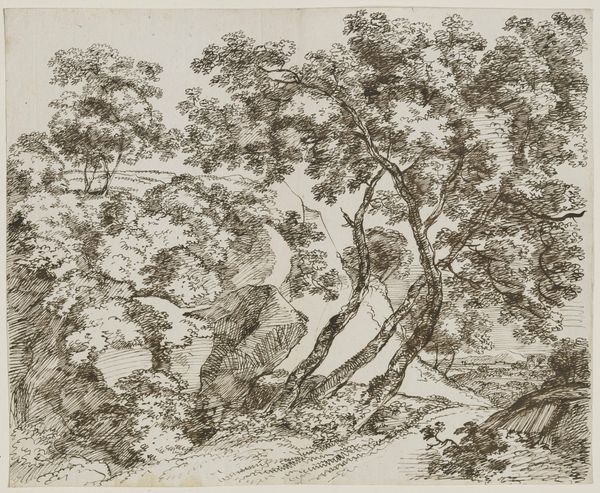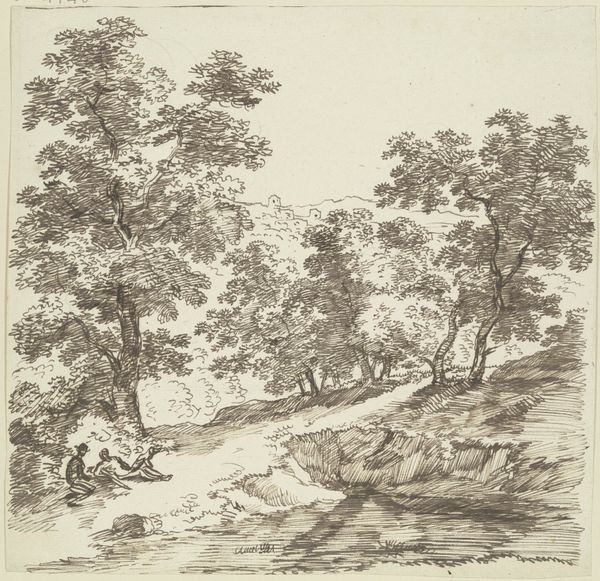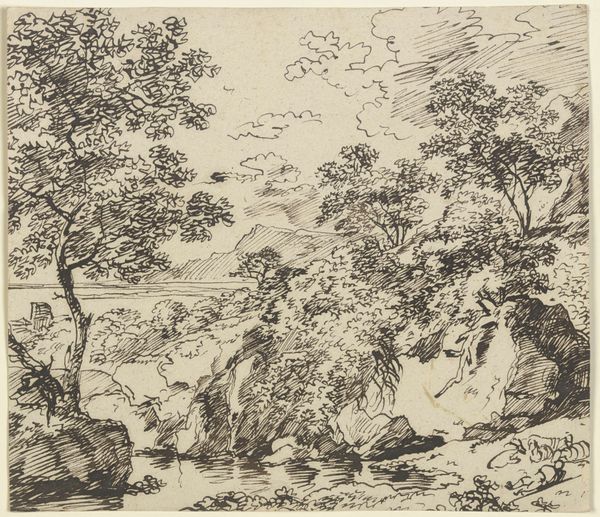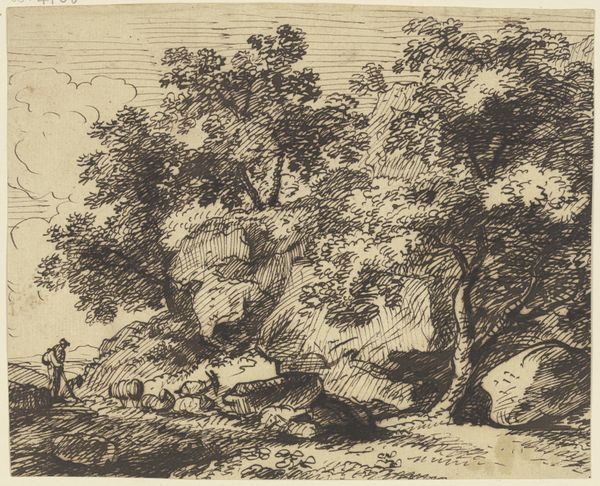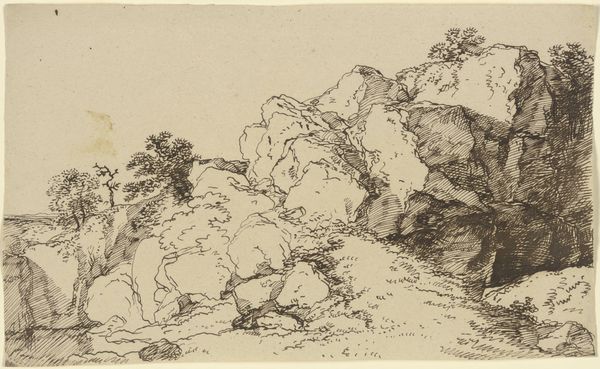
drawing, etching, ink
#
drawing
#
ink drawing
#
etching
#
landscape
#
etching
#
ink
#
romanticism
#
15_18th-century
#
line
Copyright: Public Domain
Editor: Here we have Franz Kobell's "Mountain Landscape with Water and Figures," an 18th-century ink and etching drawing. The level of detail, especially given the medium, is striking. I find it quite serene, yet also dramatic. What's your take on it? Curator: Serenity is a good starting point. But let's think about what constitutes serenity in this context. Consider the historical moment: the rise of Enlightenment ideals coinciding with entrenched social hierarchies. How does the idealization of nature in Romanticism, like we see here, perhaps function as both an escape from and a commentary on those social structures? Notice the figures – small, almost incidental. Editor: They seem dwarfed by the landscape, almost powerless. Curator: Exactly! That subordination invites analysis. Is this landscape merely a beautiful backdrop, or does it actively participate in shaping the human experience within it? The 'natural' world has never been separate from cultural, political, and even gendered experiences. Who gets to experience "serenity" within a landscape like this? Whose labor creates the conditions for such leisurely contemplation? Editor: So, the drawing isn't just about escaping to nature, but about acknowledging the power dynamics embedded within it? Curator: Precisely. Think about access, privilege, and the romanticized image versus the lived reality for those connected to the land, then and now. These landscapes, even in their apparent simplicity, invite us to question the narratives they subtly perpetuate. Editor: That gives me a lot to consider when I look at landscape art now. It’s more than just pretty scenery. Curator: Indeed. It is a lens through which we can examine our relationships to the environment and to each other. The beauty itself can serve as an entry point for critical reflection.
Comments
No comments
Be the first to comment and join the conversation on the ultimate creative platform.
